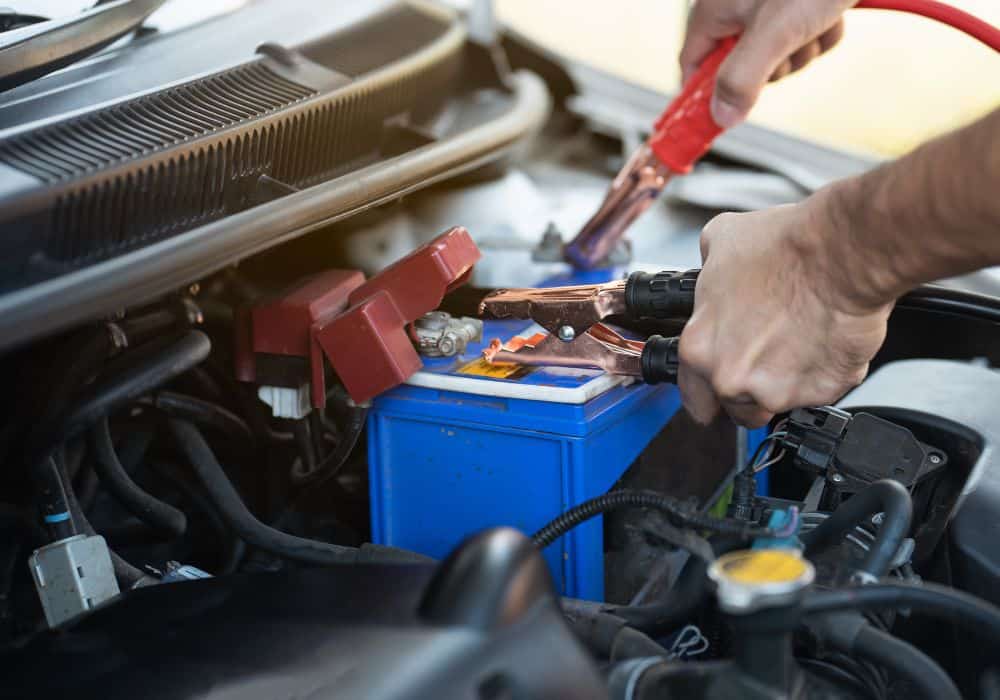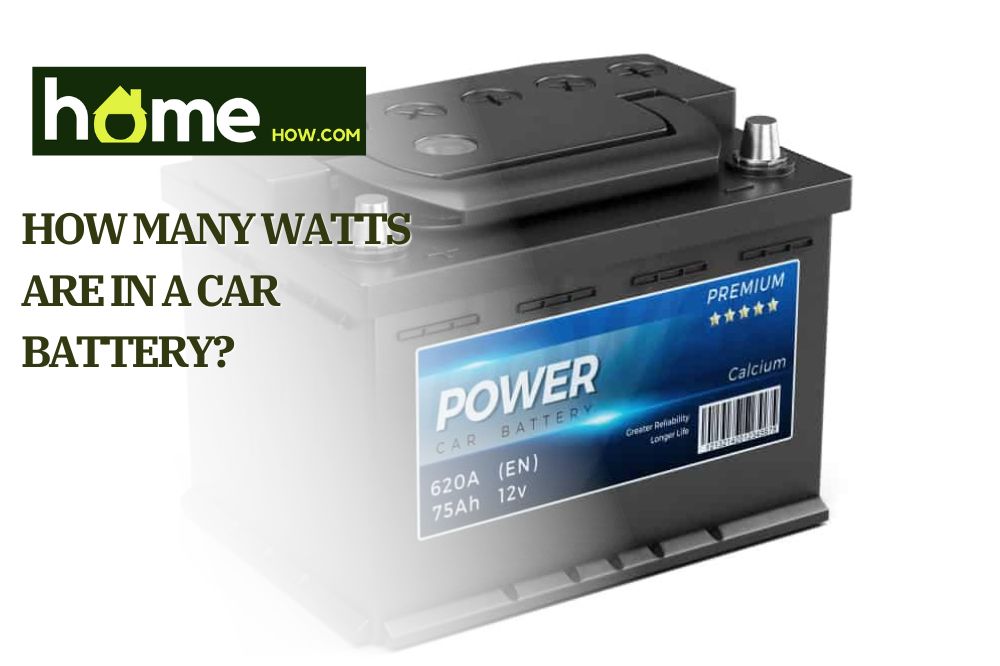If you’re like most people, you probably don’t think about your car’s battery very often. It’s there, it works, and that’s about it. But if you want to keep your car in top condition at all times—and if you want to make sure that one of the most important machines in your life (your car) can start whenever it needs to—then you need to know how many watts are in a car battery.
In this article, we’ll take a look at how many watts you need when starting a car, and how to pick the best car battery for your vehicle.
What is watt and how does your car’s battery work?
When you’re driving around, there’s a lot your car needs to do. From staying cool to keeping the engine running and everything in between, your car’s electrical system is responsible for a lot. But what is it that makes up an electrical system? How many watts are in a car battery? And most importantly: how does it all work together?
First things first, let’s see what a watt is: a watt is a unit of power. It measures how much energy is used in one second, and it’s equal to 1 joule per second. The more watts you use, the faster your battery drains. Watts can be calculated by multiplying amperage (amps) by voltage (volts).
How does it all work together?
A car battery is made up of six cells, each of which contains two plates made of lead. These plates are separated by an electrolyte solution of sulfuric acid and water. When you turn on your engine, the alternator charges the battery by sending electricity from one terminal (called the positive or POS) to another terminal (called the negative or NEG).
This makes electrons flow through the circuit from POS to NEG and back again. It’s this movement of electrons that powers all of your electrical devices in your car—including lights, radio, air conditioner, etc.—as well as powering the starter motor when you turn over your engine.
What’s the Car Battery Voltage?

The voltage of your car battery is determined by the number of cells in it. Your average 12-volt battery has six cells, which means it has about 66 volts. The higher the voltage, the more powerful your battery will be—and the more amps it will be able to pull out when you need it.
Now let’s talk about how long it takes for that energy to be released when you run down your car’s battery. The rule of thumb is that for every 1 volt of voltage in your battery, it will release 1 amp of current for every hour of discharging time. So if your car uses 12 volts, then it will release 12 amps per hour until it runs out of juice altogether.
How many watts does a car battery have?
This depends on what kind of car you have and how powerful your engine needs to be. The more powerful the engine, the more energy it uses—and the higher-powered batteries are needed to keep up with that demand.
A car’s battery is used to store electrical power. It powers the car’s electrical systems and is found in the trunk of the vehicle. A typical fully-charged automobile battery has a 12-volt capacity and a wattage range of 400–6000.
An automobile battery’s capacity is expressed in amp hours (Ah). Watt hours represent the amount of energy it takes to discharge one watt for one hour. So, if you have a 60 amp hour battery and are discharging it at 1 amp, it will take 60 hours to completely drain your battery.
Most car batteries nowadays are 12-volt 105 AH batteries, which can deliver 12 x 105, or 1260 Watt-hours (1.26 kWh). When you’re starting up your engine, it kicks on instantly to make sure that you can get going as soon as possible. To get things moving, you’ll need a power of at least 1,000 Watts.
How much power does a car battery store?
We know how many watts your battery can have, but the power in its storage depends on some other factors. The majority of batteries are either rated at a 10-hour rate or a 20-hour rate. This battery can handle that many amps for 20 hours (or 10 hours) before its voltage declines to the point where it is no longer useful, at around 11 volts.
The average type of battery has a 50 amp hour capacity if it can sustain 5 amps for 10 hours. That is approximately 600 WH.
How do you pick the car battery?
When you’re looking for a car battery, it’s important to understand how much power your vehicle needs. There are two different types of car batteries: standard and deep cycle. Standard batteries are designed for vehicles that run on a lot of electricity—like trucks, buses, and heavy equipment. Deep-cycle batteries are made to handle heavy work (like construction), but they also work well in cars that need less power.
The quantity of amp-hours you require is one of the most important considerations when selecting a car battery. This is dependent on the application and your geographic location. You should think about getting batteries with a capacity that can handle more than twice the projected outage.
To calculate the needed amp-hour, divide your average daily use by the battery’s voltage. Consider the scenario where you use a 48-volt power system at a rate of kWh per day. 48 divided by 5000 results in 105 AH.
Since you don’t want to deplete the battery below 50%, you will require at least 210 Ah.
When should you change your car’s battery?

A battery usually stops working because it can no longer maintain a charge over a period of time. The battery’s lead plates degrade, making it impossible for them to sustain current. The battery will have to be changed in this case.
You can also notice when the life of your battery is close to an end when you see the headlights getting less bright and the “Check Engine” light illuminates.
If your vehicle is not starting correctly or has trouble starting in cold weather (below 32 degrees Fahrenheit), then it may be time to replace the battery. You can also tell when it’s time to change your battery by looking at its voltage level; if it drops below 12 volts while running, then that’s another sign that it needs replacing.
Things to consider when picking a new battery
Here are some tips for picking the right battery for your car:
- Know what kind of car you have. Different types of vehicles require different kinds of batteries, so make sure you get one that fits your needs. For example, some cars use lead-acid batteries while others use lithium-ion or lead-calcium batteries. These differences can affect how long they last and how much weight they add to your vehicle.
- If you live in a colder climate and use your car only for short trips around town, then an AGM battery may be best for you. If you live in a warm climate and drive long distances frequently, then an absorbed glass mat (AGM) battery might be best for you.
- If you live in an area that has frequent downpours during the rainy season but very few snowstorms during winter months (or vice versa), then a deep cycle battery may be best for your needs.
- Look at the appropriate cell power. The size of your battery is important, as you’re searching for items that can fit in your automobile. If you don’t do this, you could have to buy many trial batteries, which will cost additional money.
- Check the battery name. The brand of your battery is still another crucial factor, so buy from trusted brands, as they guarantee performance and safety.
Conclusion
For most people, car batteries are pretty straightforward. You know when they’re low on power and need to be charged, and you know when they need to be replaced. But there are some situations where you might have a hard time figuring out whether or not your battery needs to be replaced, and that’s when you need information about its watts, voltage and power.
This can help to know what factors affect the performance of your car battery over time. That way, you’ll be able to tell when it’s time for a replacement—and when it’s not! And if you have more questions, don’t hesitate to let us know in the comments.
